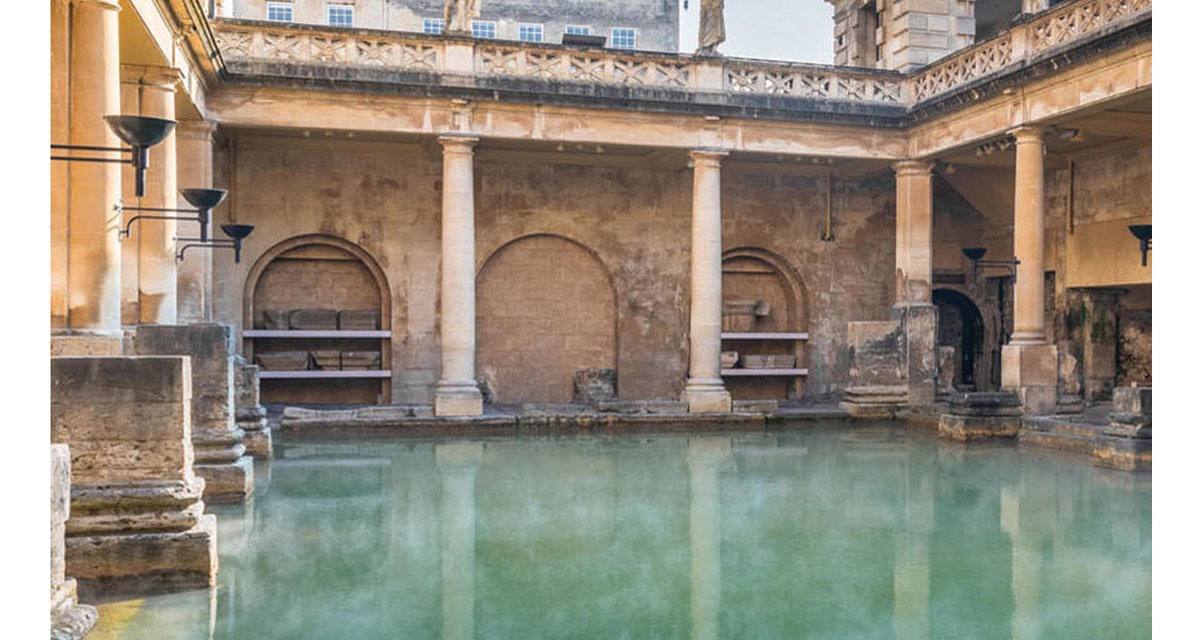The bathroom has come to have a high status in the home. For most of us, it’s not only a place of rest and rejuvenation, the bathroom is also a room we like to make beautiful with fixtures and countertops, charmingly tiled showers and floors, plush rugs, and anything else that makes us feel calm and surrounded by comfort. What was once called the “necessary” has gone through so many changes over time that it can be hard to believe how those before us took care of their most basic needs.
Before the Bathroom
While indoor plumbing wasn’t widely seen until the latter part of the 19th century, indoor and outdoor plumbing have both been around since ancient Roman times (and really, even long before…we just have more information about the Romans). You’ve probably heard of the public baths that provided a way for Romans to get clean, while also enjoying a social experience. Even though wealthier citizens had their own private baths, they still came to the public baths in order to see and be seen. It was the place to be! The baths offered hot and cold water and steam rooms, often coming from local hot springs.
At that time, getting clean was completely separate from using the toilet. Public facilities were common in ancient Rome, where toilets were built over a running stream of water. There was even a separate stream of clean water for hand washing in some places. Although they may not have fully understood why, the people of that time seemed to recognize that it was important to keep the different water uses separate.
There is also historic evidence of the importance of ritualistic bathing in the Middle East, Israel, and Turkey, where the “Turkish baths” are well known for their beauty and admired to this day. In Japan, the steam baths have been in use for centuries, as well. It seems everyone loves a good bath.
However, the popularity of cleanliness and bathing went through phases over the centuries. With the plague hitting England seven times in 200 years, the public opinion of bathing, hygiene, and cleanliness took a nosedive. In 1546, King Henry VIII shut down public bathhouses in England for good, blaming them for sickness. During the Renaissance, water was feared to be a carrier of disease…and it most definitely was a carrier at times, due to mixing clean water with sewage. For this reason, many people became fearful of bathing and water in general.
Evolution of the modern bathroom
The first toilet with the ability to flush was invented in England in 1596 by Sir John Harrington. His invention didn’t attract many followers in England or the rest of Europe, and it wasn’t until the 19th century that several inventors got a patent on a toilet system. The end of the 19th century was an elegant time for toilets, in terms of shape and decoration. They were so ornately decorated and beautiful, we can see where the love of the bathroom may have started.
Thanks to the Industrial Revolution, bathrooms could be outfitted with the mechanics needed to make them functional. Hot water could be produced for use in the home and having a bath was much easier due to the development of gas water heaters. Personal bathing and indoor flush toilets became much more common.
In America, the National Public Health Act of 1848 created a plumbing code for the country and many bigger city homes, especially those of the more affluent, began to feature toilets, bathtubs, and sinks. The standard bathroom as we know it had had arrived.
In the beginning of the 20th century, inventions for the bathroom were on the rise and catalogues became available to advertise the latest and greatest features available. For the customers, it was highly desired to have a first-class modern bathroom, with all comforts, in their newly built houses. This trend has continued throughout the decades, through changing styles and fashions. The basic function of the room, however, has stayed the same as a place of comfort and respite. A place to wake up to, to put on our face for the day…or a place to come home to, knowing relaxation awaits us.























